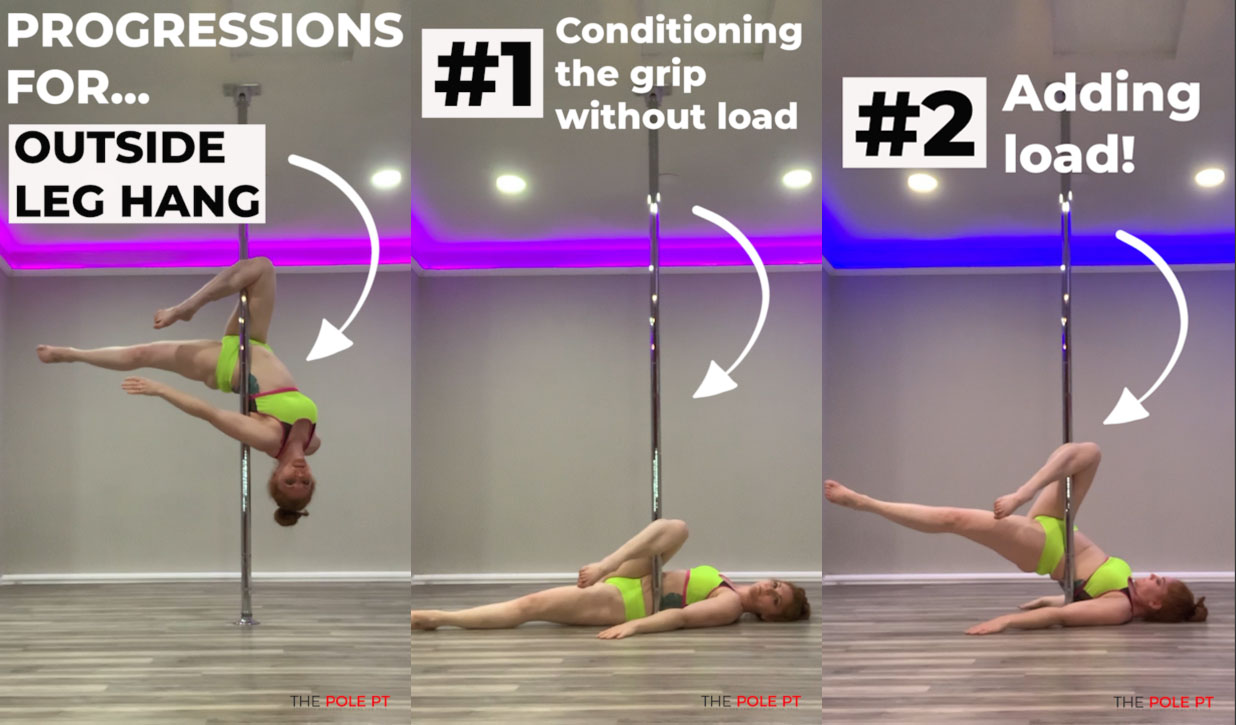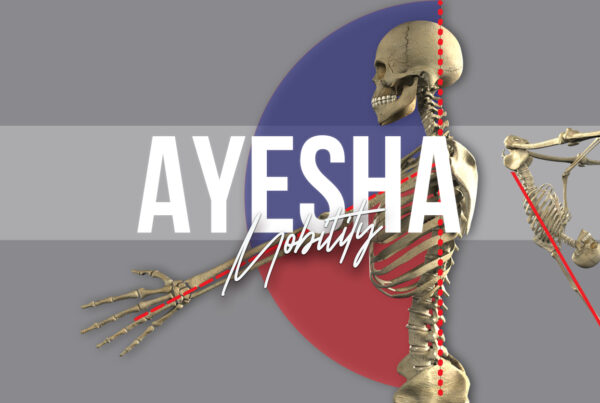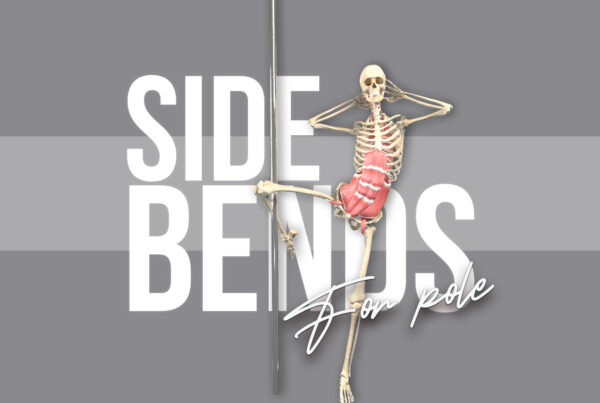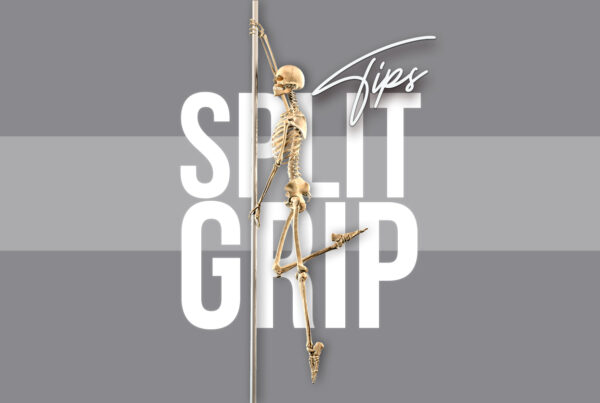If you missed our nerdy outside leg hang anatomy session – whatcha waiting for?! You can go check out the full post here, or catch up with the quick video summary below!
…then come back here and explore some of our favourite outside leg hang progression examples, demoed by the incredible Colleen Jolly, our Advanced Pole Instructor!
Outside leg hang progression #1
In our first progression, we’re deloading the position by performing the leg hang on the floor. Here, we can condition our leg grip and explore the feeling of engagement of our leg wrapping around the pole with our bodyweight fully supported by the floor.
Why for? Well, we’re essentially putting less load on our muscles, tendons and ligaments while our body (and brain!) gets to grips with that, errr…. grip.
Outside leg hang progression #2
We’re staying on the floor for our second progression. Here, we’re getting all the magic of progression 1 – building strength, conditioning and developing awareness, still without fully loading the position. A lot of our bodyweight is still supported by the floor, but now with our hips unsupported, we’re adding a little extra load. It also allows us to explore and condition the position of spinal extension and hip extension of that bottom leg, while simultaneously maintaining the grip engagement with our top leg.
Outside leg hang progression #3
For our third progression, we wanted to show you a couple of examples of descents into the leg hang. This is a clever way of deloading the entry point – so you’re not having to do a full ‘traditional’ invert to get into the leg hang, you can instead carefully lower down into it. Not only does it mean you’ll be closer to the floor in your leg hang (yay comfort zone!), but it also gives you a way to work on the leg hang without needing to lift into your invert.
That can be particularly useful if you want to increase volume of training in your leg hang position without also increasing the volume of inverts you are doing, or if you just want to take the ‘traditional’ invert out of the equation altogether.
Outside leg hang progression #4
Now we’re getting to something very close to the ‘full’ movement. This is an invert into the full leg hang position, but Colleen is demonstrating here a slightly lower starting point – her torso is already leaning quite far back when she lifts into the invert. It reduces the intensity and complexity of that initial invert and is another way of deloading the entry into the outside leg hang.
Why are progressions like this important?
Using progressions like this is the perfect way to creating gradual, progressive overload for your pole tricks so you can get there logically, safely and feeling strong and confident – instead of heading straight for the end move before your body is ready and ending up frustrated, bummed out or worse still… injured.
Progressions like this allow you to work on elements of strength and skill, and condition your body for your outside leg hang without fully loading the position, and/or using alternative entry points to allow you to explore the final shape without the full invert at the start.
What do YOUR outside leg hang progressions look like?
Remember, these are just examples! The progressions YOU need to incorporate in your training towards your outside leg hang might look a lot different!
With these posts, I want to help you explore and identify the areas YOU need to focus on + give you some ideas so you can work with your instructors/coaches/physios and pitch your progressions at the right level for YOU.
Here’s how you can do that in a logical way:
- Check out the key physical demands of the outside leg hang from our anatomy video.
- Think about your own strengths and weaknesses in the different biomechanical demands of the outside leg hang so you can…
- Figure out which direction to go in with your ‘off’ the pole progressions! *You can cross reference with the strength and conditioning progressions in my book if you have it!*
- Incorporate gradual ‘on’ the pole progressions like our examples above.
- Add a generous sprinkle of that pole dancer tenacity and determination, stay consistent and…
- Nail that outside leg hang! Boom!
Thirsty for more?
Check out my recent post: Gotta chair before you can pheonix: progressive overload in Pole Dance (8 ways) if you wanna learn more about the importance of progressive overload in strength and conditioning – with some more ideas about how to deload pole movements!
Learn more about the principles of strength and conditioning for pole, including all the ‘off’ the pole exercises and assessments I use with my pole dance clients in my text book, Strength and Conditioning for Pole! Available now in paperback or immediate ebook download!








